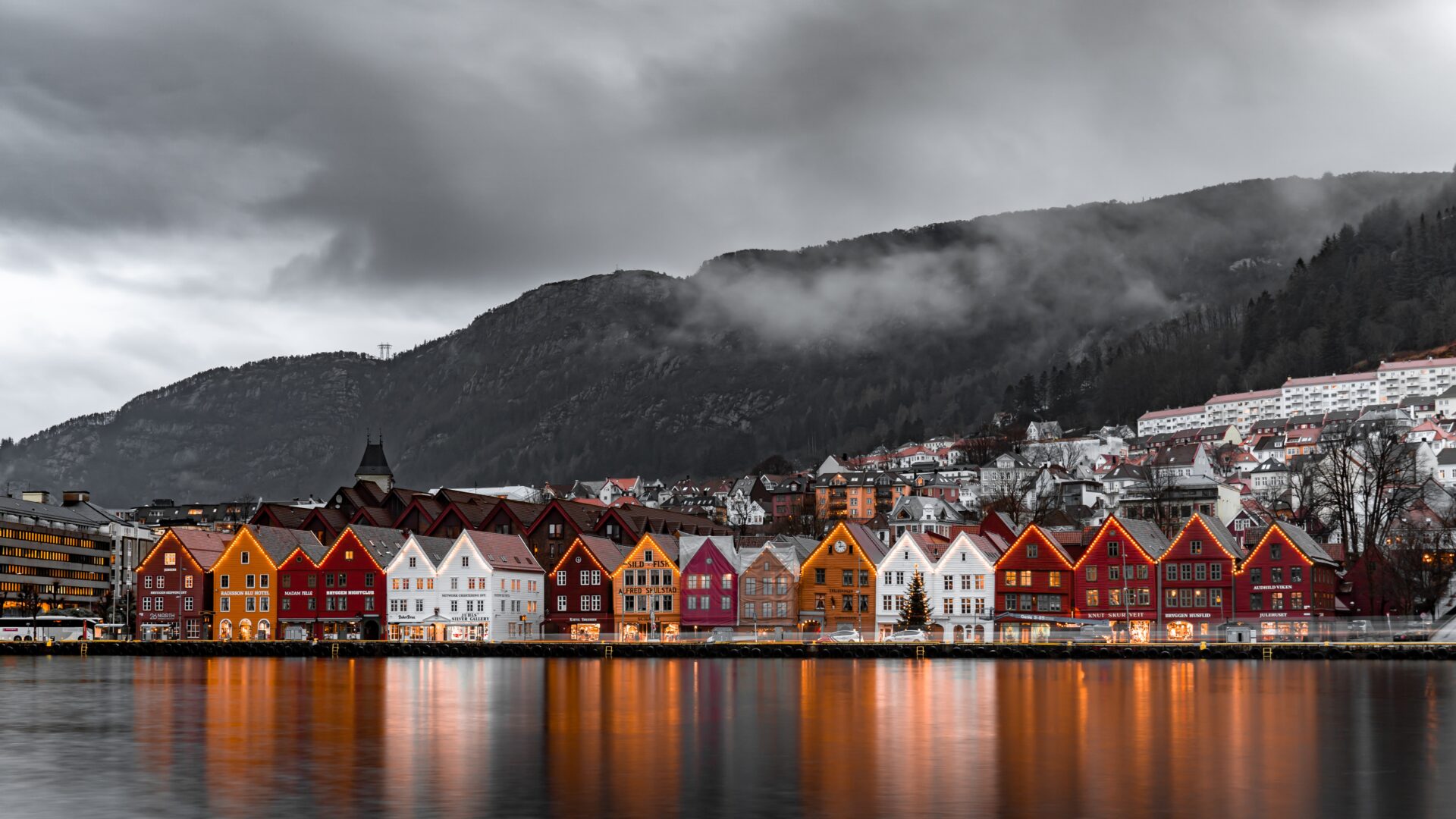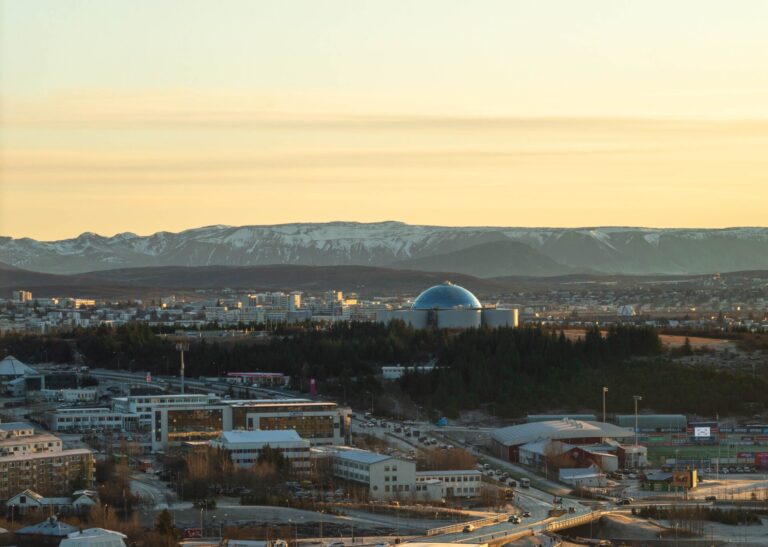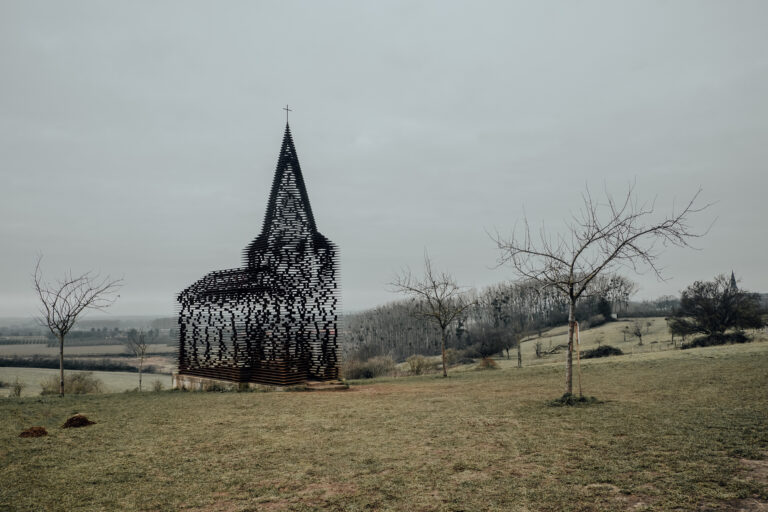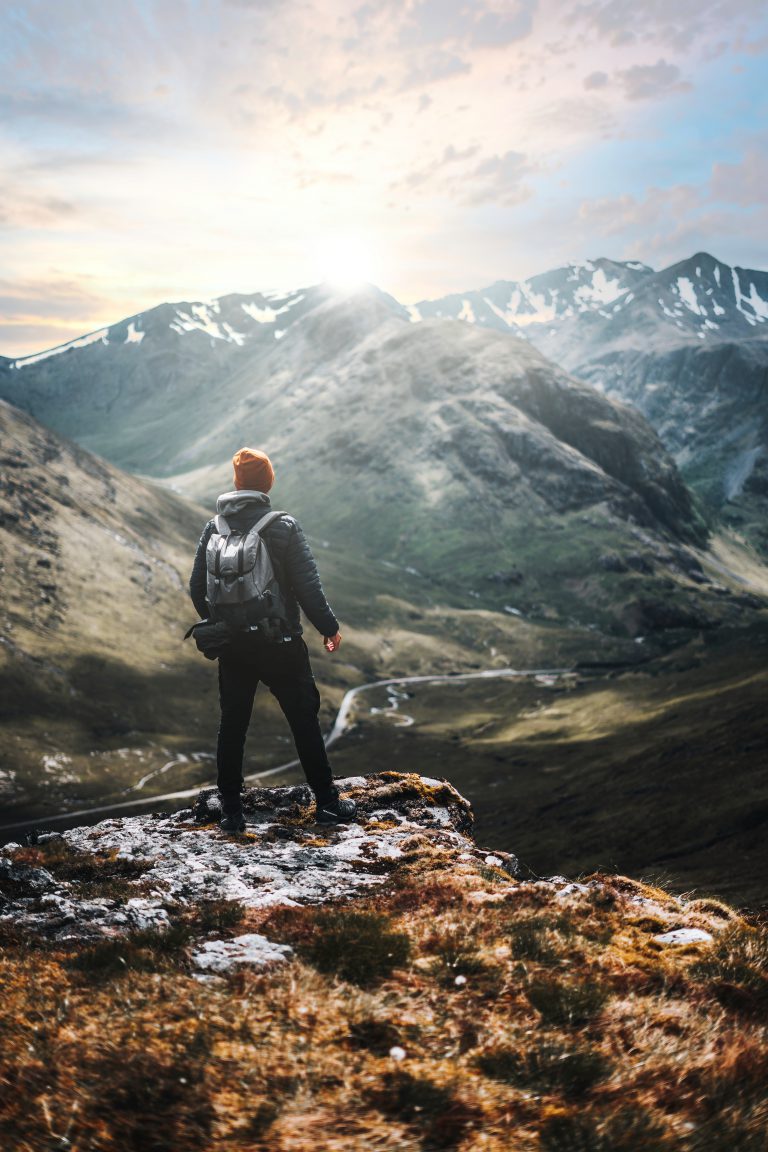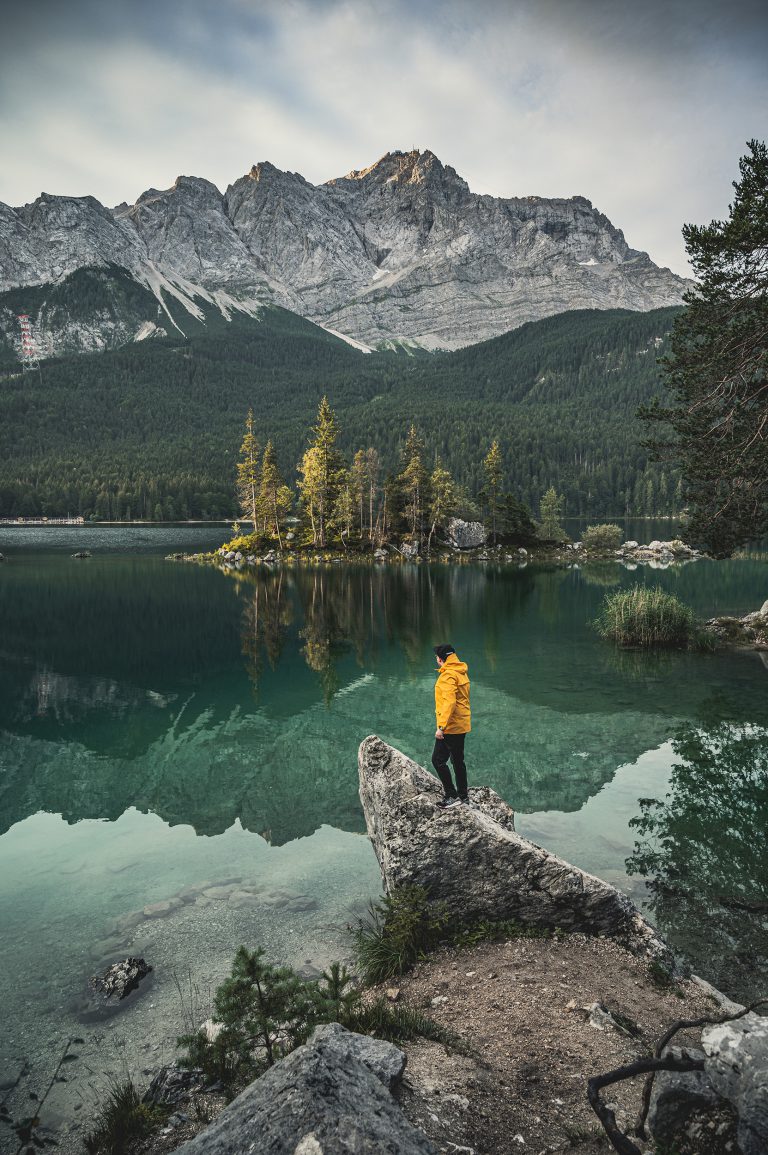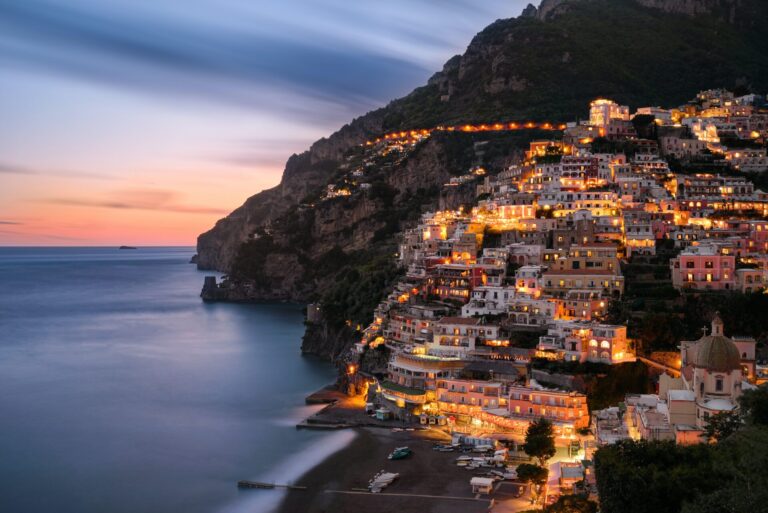The Ultimate Interrail Itinerary for Exploring Scandinavia
Traveling through Scandinavia with Interrail can be a sustainable and low-cost way to see the region’s beauty. With an Interrail pass, you can travel by train through multiple cities in Denmark, Sweden, Finland, and Norway, with a flexible schedule that allows you to spend as much or as little time as you’d like in each place.
The best way to plan a sustainable and low-cost trip through Scandinavia is to purchase an Interrail Global Pass. We picked one that allowed us to have 15 travel days within 2 months, perfect for a trip with 13 travel days! We road-tripped for 28 days, but the formula is flexible and allows you can choose the number of days you’d like to spend in each country, as well as the specific routes you’d like to take.
The cost of an Interrail pass can vary depending on the type of pass you choose and the age of the traveler, but our Global Pass (an adult traveler that traveled 14 days within a month) costs around $500. You can read our extensive Interrail guide for more information about the prices, passes, and planning.
While traveling, you can also make an effort to reduce your environmental impact by using Zero Waste travel solutions and staying in eco-friendly accommodations, such as hostels or guesthouses that prioritize sustainability, and choosing local and organic food options.
Page Contents
When should you travel through Scandinavia by train?
The best time to visit Scandinavia by train can vary depending on your interests and preferences. The weather is generally warm and sunny during the summer months, making it a great time to enjoy outdoor activities such as hiking, biking, and swimming. The longer daylight hours also allow for more time to explore the cities and natural beauty of the region. However, these months can also be the busiest and most expensive time to visit.
Alternatively, the shoulder seasons of spring and fall can also be an excellent time to visit Scandinavia by train, as the weather is generally mild and the crowds are smaller. Winter can also be a beautiful time to visit, with the opportunity to experience the region’s unique holiday traditions, enjoy winter sports, and witness the northern lights.
Trains in Scandinavia are generally well-equipped to handle harsh conditions. They should operate reliably during the colder months as they are equipped with features such as snow plows and heating systems to ensure that they can continue to run safely and comfortably during winter.
Interrail in Scandinavia: A 28-Day Itinerary for 14 Travel Days
We wanted to road-trip around Scandinavia by train, as we thought it would be the most convenient and scenic way to explore the region. The fact that Interrail allows us to travel through multiple countries with a flexible schedule was our main reason for traveling by train.
Places visited on this trip:
- Malmö, Sweden
- Gothenburg, Sweden
- Stockholm, Sweden
- Uppsala, Sweden
- Helsinki, Finland
- Rovaniemi, Finland
- Kiruna, Sweden
- Narvik, Norway
- Bodo, Norway
- Trondheim, Norway
- Bergen, Norway
- Stavanger, Norway
- Oslo, Norway
- Copenhagen, Denmark
Malmö, Sweden Interrail Itinerary tips
We started our trip in Malmo, a city in southern Sweden.
Malmö is known for its interesting history dating back to the middle ages (Malmö Castle, the St. Peter’s Church,..), its cultural diversity coming from its large immigration population, and modern architecture (Turning Torso, Ribersborgs Kallbadhus, Oresund Bridge,..).
One of the highlights of a visit to Malmo is exploring the Gamla Staden (Old Town), a historic district in the center of the city that is home to several cobbled streets, colorful houses, and interesting shops and restaurants.
Another must-see attraction is the Turning Torso, a twisted skyscraper that is the tallest building in Sweden and offers panoramic views of the city and the surrounding region.
Specific tips for your Malmö Interrail Itinerary:
- Stay at Ohboy Hotel, a sustainable design hotel located in the city center. Make sure to grab breakfast at the on-site cafe while you learn about the hotel’s eco-friendly features.
- Malmohus Castle a historic castle located in the city’s center. If you’re interested in history, you might want to take a guided tour of the castle to learn about its past and see the collections of art and artifacts it houses.
- Walk through Slottstradgarden, Gustav Adolfs Torget, Varvsparken, and Västra Hamnen.
- Visit the Moderna Museet Malmo, a museum of modern and contemporary art.
- Try Saltimporten Canteen, a seafood restaurant located in a former import warehouse.
- Grab a drink at Mello Yello, a cozy bar located near the train station.
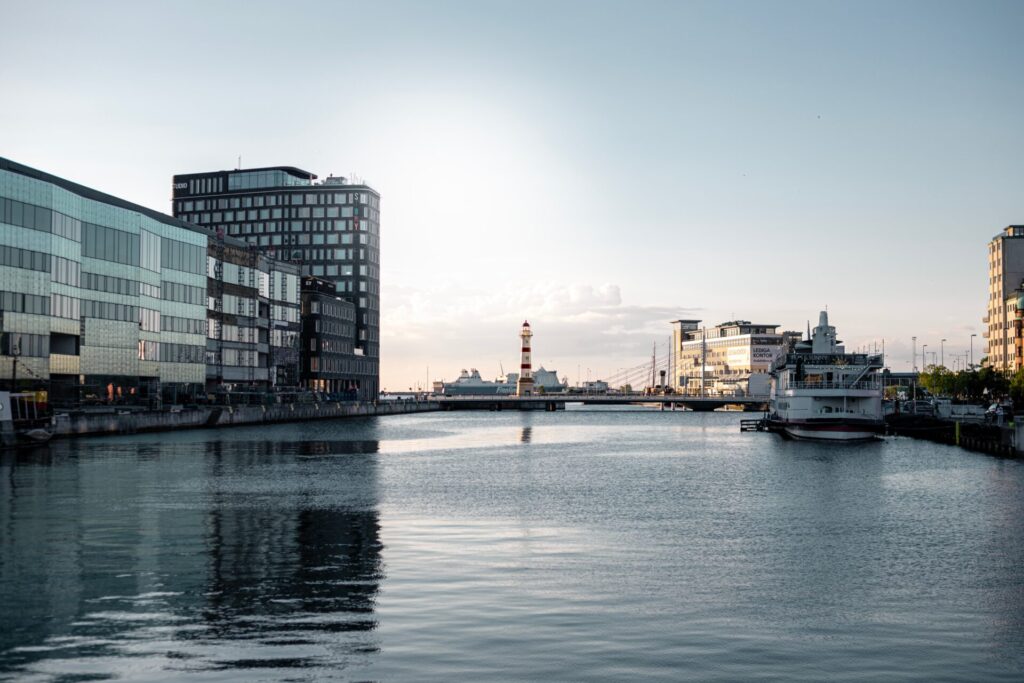
Gothenburg, Sweden Interrail Itinerary tips
Gothenburg is a city in Sweden, often referred to as the “Venice of the North” due to its network of charming canals, which wind through the city center and past several waterfront neighborhoods. These canals, along with the city’s numerous parks and green spaces, such as Slottsskogen, make Gothenburg an excellent destination for outdoor enthusiasts. The city is also known for its cultural and artistic attractions, including museums, galleries, theaters, and music venues.
The thing that really sets Gothenburg apart is its focus on sustainability, as the city has a long history of environmental conservation and has been recognized as one of the greenest cities in Europe.
Gothenburg is also a foodie destination, with a variety of local and international cuisine on offer. The city is known for its seafood and is known for its craft beer and gin. Gothenburg is also home to several breweries and distilleries.
Specific tips for your Gothenburg Interrail Itinerary:
- Trädgårdsföreningen: a beautiful park that features a variety of plants and flowers, as well as several walking paths and ponds. The park is home to Palmhuset, a glasshouse that houses a collection of tropical plants and flowers.
- Botaniska Trädgården: Botaniska Trädgården is a botanical garden located in the center of the city.
- Lindholmen Street Food Market: a food market located in the Lindholmen neighborhood featuring a variety of food stalls selling local and international cuisine.
- Saluhallen is a food hall that features several stalls selling fresh produce, meat, and fish, as well as prepared foods.
- The best seafood restaurants we found were Hello Monkey and Fiskebar 17, while Tavolo is a great Italian restaurant.
- Da Matteo Cafe in Magasinsgatan: Da Matteo is a popular cafe chain in Gothenburg, located in a historic building with a cozy atmosphere.
- Skansen Kronan: a 17th-century fortification located on a hill in the city’s center, offering panoramic views of the city.
- Gothenburg City Museum (Göteborg Stadsmuseet): a museum located that explores the history and culture of Gothenburg, featuring a number of exhibits on topics such as the city’s maritime history, its industrial past, and its cultural heritage.
- Nya Älvsborg Fästning: Nya Älvsborg Fästning is a 17th-century fortification located on an island in the Göta River. The fortification was used to defend the city and is now open to the public, with guided tours available.
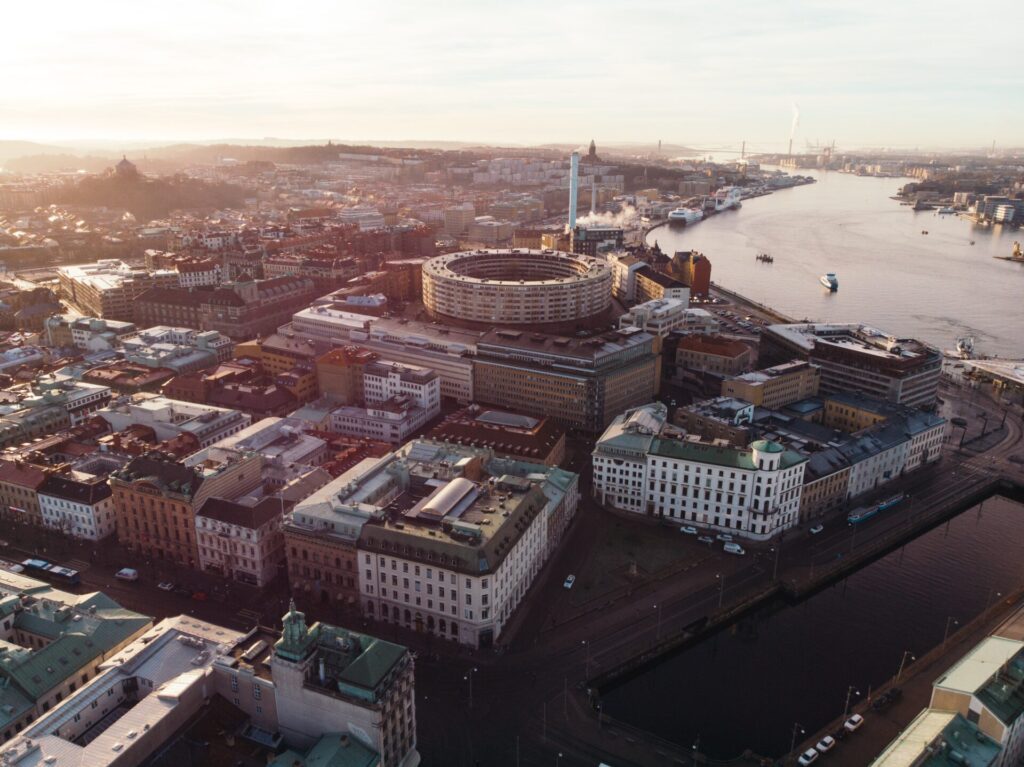
Stockholm, Sweden Interrail Itinerary tips
Stockholm is the capital and largest city of Sweden, located on the eastern coast of Sweden – a 3-hour train ride from Gothenburg.
The city of Stockholm spread across 14 islands, is home to several iconic modern buildings, such as the Stockholm City Hall and the Ericsson Globe, as well as many historic buildings and landmarks, such as the Royal Palace and Gamla Stan (Old Town).
Just like the rest of the country, Stockholm has been working on several eco-friendly initiatives and is home to a number of sustainable design hotels and restaurants, especially in the Hammarby Sjöstad neighborhood.
Specific tips for your Stockholm Interrail Itinerary:
- Djurgarden Island: This island is home to several museums and attractions, including the Abba Museum, the Vasa Museum, and the Skansen open-air museum.
- National Museum: Sweden’s largest museum of art and cultural history, and it’s home to a wide range of exhibits that cover more than 600 years of Swedish history.
- Medieval Museum: Dedicated to the history of Sweden from the Viking Age to the Renaissance. The museum features a collection of artifacts, including weapons, armor, and household objects.
- Drottningholm Palace: a UNESCO World Heritage Site and the residence of the Swedish royal family. The palace is known for its stunning Baroque architecture and its beautiful gardens.
- Monteliusvägen: This street is located on the hill overlooking the city and offers panoramic views of Stockholm. It’s a popular spot for photography and sightseeing.
- Stockholm’s subway art: Stockholm’s subway system is home to more than 90 stations, many of which feature works of art and sculptures.
- Villa Dagmar hotel: This hotel is located in the trendy Södermalm neighborhood and offers stylish and modern accommodations.
- Frantzen restaurant: a Michelin-starred restaurant that serves innovative Swedish cuisine.
- Lilla Ego: a trendy bar and restaurant that serves a range of cocktails and small plates.
- Tennstopet: a popular bar and restaurant are known for its relaxed atmosphere and its selection of beers and cocktails.
- Pelikan: a classic Swedish bar and restaurant that’s been a fixture in Stockholm for more than 150 years.
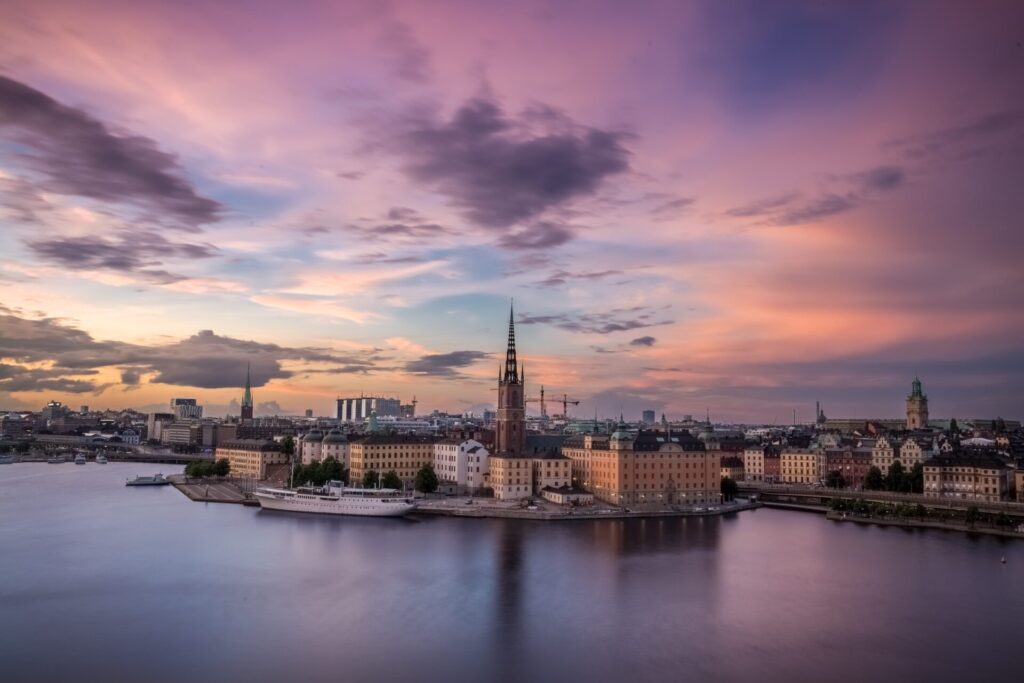
Uppsala, Sweden Interrail Itinerary tips
Uppsala is a city located in eastern Sweden, about an hour north of Stockholm.
The top reason to visit Uppsala is to see the Uppsala Cathedral; the largest cathedral in Scandinavia. The cathedral dates back to the 13th century and is a beautiful example of Gothic architecture. Next to the largest Cathedral, Uppsala also houses the oldest university in Scandinavia and has a long history of producing distinguished scholars and researchers.
In addition to the cathedral and university, Uppsala is home to several other cultural and Instagrammable locations, such as the Fyris River and Linnaeus Garden. Overall, one day is enough to visit Uppsala.
Specific tips for your Uppsala Interrail Itinerary:
- Uppsala Castle: Upssala Slot is a stunning 16th-century castle that was once home to Sweden’s royal family. It is now a museum and is open to the public for tours.
- Hambergs Fisk: This is a popular seafood restaurant known for its fresh and delicious fish dishes.
- Köttinspektionen: This is a popular bar and restaurant in Uppsala that serves traditional Swedish meatballs.
- Peppar Peppar: a café and bakery known for its delicious pastries and sandwiches.
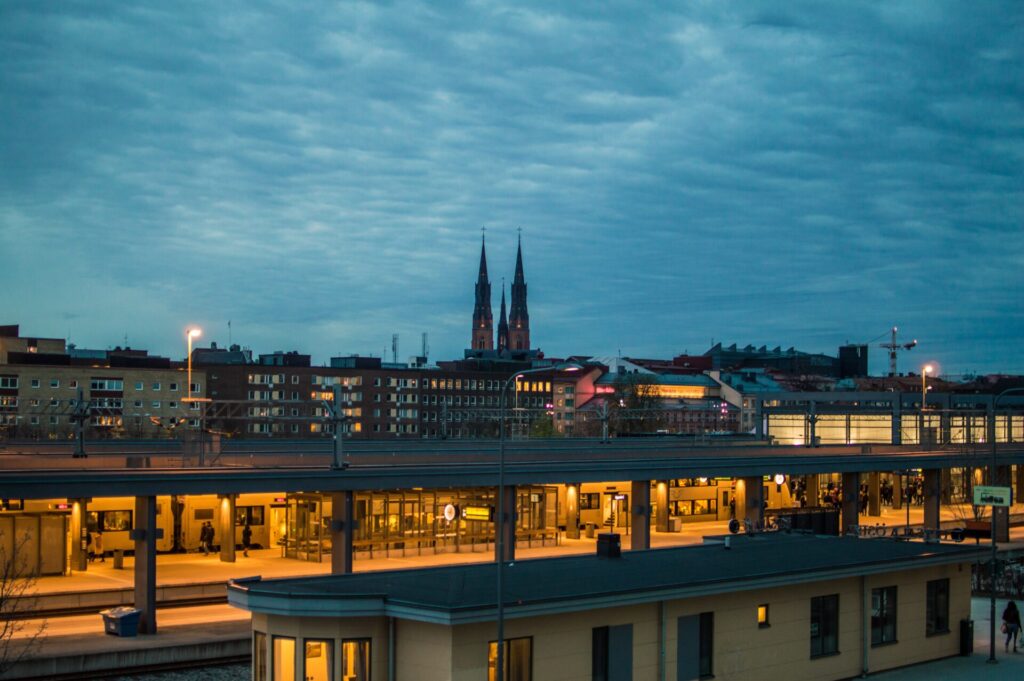
Helsinki, Finland Interrail Itinerary tips
Helsinki is the capital and largest city of Finland, located on the southern coast of the country on the shore of Finland. It is a vibrant and cosmopolitan city with a rich cultural history and a variety of attractions to visit.
Taking the train is one of the most convenient ways to travel to Helsinki from Uppsala, as there are several trains that run from Uppsala to Helsinki each day, and the journey only takes about 5 hours.
As Helsinki is the capital of Finland, it houses several museums and galleries with an interesting history, including the Helsinki Art Museum and the National Museum of Finland. Next to many cultural attractions, it also contains several beautiful parks and green spaces, such as the Central Park and the Töölönlahti Bay.
Helsinki is also known for its lively food scene, with various restaurants and cafes offering everything from traditional Finnish cuisine (containing a lot of seafood) to international dishes. It shouldn’t be a surprise that Helsinki is also home to several markets, including the Hakaniemi Market Hall, where you can find a wide variety of fresh produce, meats, and other products.
Specific tips for your Helsinki Interrail Itinerary:
- Kiasma Museum of Contemporary Art: dedicated to contemporary art and features a wide variety of works by Finnish and international artists.
- Sinebrychoff Art Museum: a beautiful 19th-century mansion that features a collection of Finnish and European art, including paintings, sculptures, and decorative arts.
- Bank of Finland Museum: This museum is dedicated to the history of money and finance in Finland.
- Ateljé Finne: a famous art gallery in Helsinki that features works by Finnish artists.
- Helsinki Cathedral: an iconic 19th-century neoclassical cathedral located in the center of Helsinki.
- Uspenski Cathedral: an Eastern Orthodox cathedral located, known for its distinctive red brick exterior and is a popular tourist attraction.
- The Island of Suomenlinna: a UNESCO World Heritage site located just off the coast of Helsinki. It is home to a series of fortifications and is a popular destination for hiking and picnicking.
- Olympic Stadium: a popular sporting venue located in Helsinki, initially built for the 1952 Summer Olympics and is now used for various sporting events.
- Konstan Möljä: a café and restaurant in Helsinki that is known for its delicious food and laid-back atmosphere.
- Andante café: a café in Helsinki that is known for its delicious coffee and pastries.
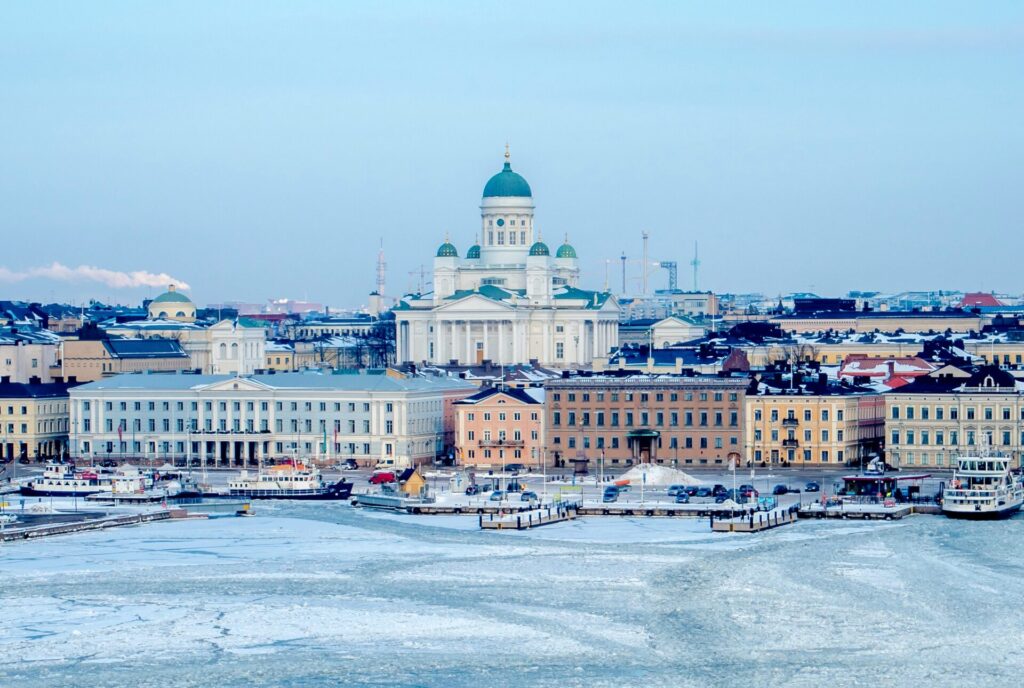
Rovaniemi, Finland Interrail Itinerary tips
Rovaniemi is a city located in the Finnish Lapland, in the northernmost region of Finland. One of the top reasons to visit Rovaniemi is to experience the beauty of the Finnish Lapland. The city is located just a few kilometers south of the Arctic Circle and is home to some of the most stunning natural landscapes in the country.
It’s indirect also the reason why we added Rovaniemi to our itinerary; its northern location offers the opportunity to see the Northern Lights, also known as the Aurora Borealis. These stunning natural lights are primarily visible from September to March when the skies are darkest. However, it is essential to remember that it is impossible to predict precisely when or where the Northern Lights will be visible, as it depends on various factors such as solar activity and weather conditions.
Another reason to visit Rovaniemi is for its cultural attractions; the city is home to the Arktikum Science Centre, which is a museum and research facility dedicated to the culture and natural history of the Arctic region. The Rovaniemi Art Museum is another popular attraction, featuring a collection of Finnish and international art.
In addition to its cultural attractions, Rovaniemi is also home to several popular touristic locations such as the Santa Claus Village (where visitors can meet Santa Claus and learn about Finnish Christmas traditions) and the Ounasvaara Ski Resort.
Specific tips for your Rovaniemi Interrail Itinerary:
- Lapland Hotels Sky Ounasvaara: a luxurious hotel located in the Ounasvaara Ski Resort, offering stunning views of the surrounding landscape.
- Lakelodge kiehinen & igloos: a unique hotel located in the Finnish Lapland that offers both traditional rooms and igloo-style accommodations.
- Nili Restaurant: a popular restaurant in Rovaniemi that serves traditional Finnish cuisine.
- Gustav Kitchen: a popular restaurant that serves international dishes.
- Amarillo Restaurant: a popular restaurant in Rovaniemi known for its delicious burgers and other American-style dishes.
- Reindeer rides: the most popular activity in Rovaniemi is to go on a reindeer ride
- Chase the northern lights. Several companies offer guided tours to help visitors find the best viewing spots.
- Crossing the arctic Circle line: Rovaniemi is located just a few kilometers south of the Arctic Circle. Visitors can cross the line and receive a special certificate to commemorate their visit.
- Artikum Museum and science center: This museum and science center is dedicated to the culture and natural history of the Arctic region.
- Korundi Culture House: a cultural center that features a variety of exhibitions and events, including concerts, plays, and other performances.
- Pilke Science Center: a science center that is dedicated to educating visitors about the natural history and culture of the Finnish Lapland.
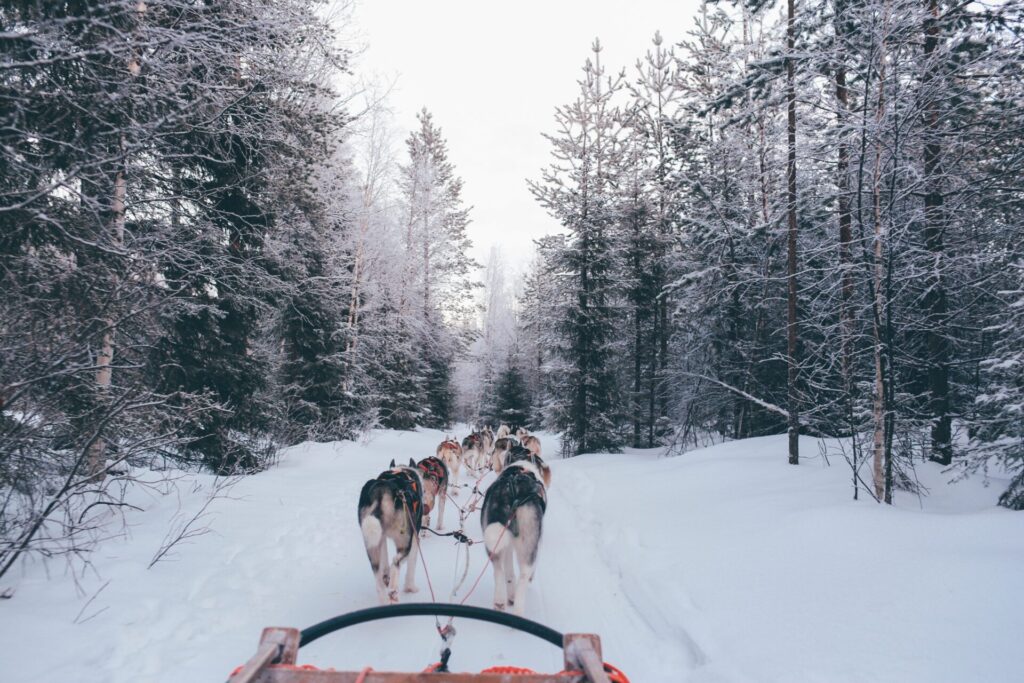
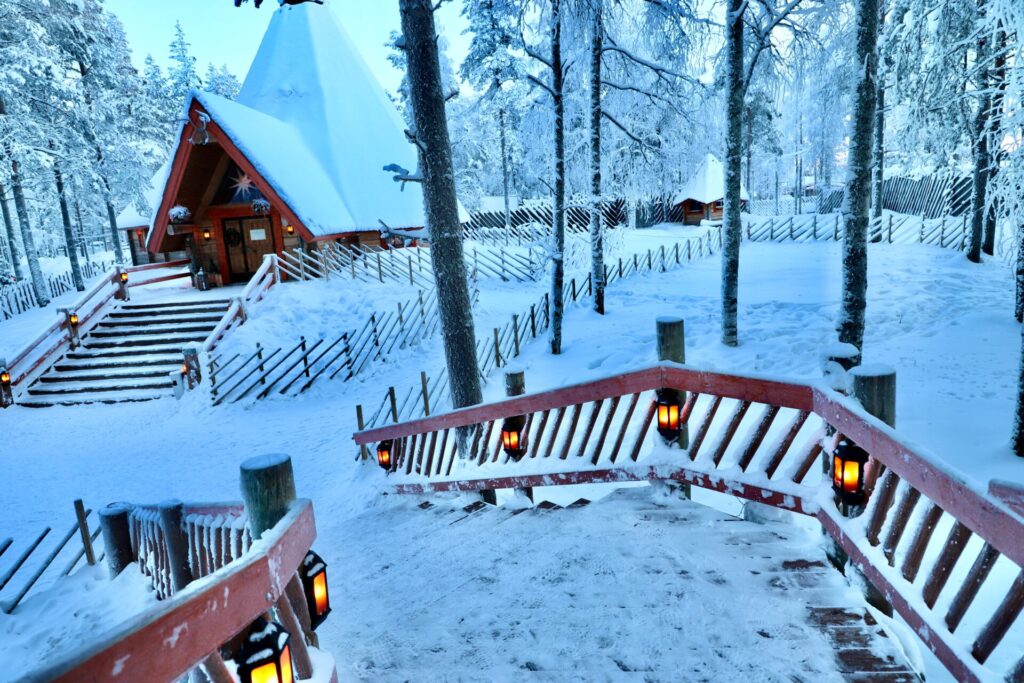
Kiruna, Sweden Interrail Itinerary tips
Kiruna is the northernmost city of Sweden, located on a 7-hour train ride from Rovaniemi.
Both cities are located in the far north of their respective countries and are thus known for their stunning natural landscapes and the opportunity to see the Northern Lights. Consider it as a rematch in case you missed them in Rovaniemi
While they have a lot of similarities, they have their own unique histories and cultures; Kiruna has a strong mining tradition, while Rovaniemi is known for its museums and science centers.
Specific tips for your Kiruna Interrail Itinerary:
- Icehotel: a hotel made entirely of ice and snow, located in the town of Jukkasjärvi, just outside of Kiruna.
- Husky Tours: Kiruna is a great place to go on a husky sled tour.
- Kiruna Pastorat: a popular tourist attraction and a beautiful example of Swedish architecture.
- Hjalmar Lundbohm Museum: a museum dedicated to the history of Kiruna and the surrounding area.
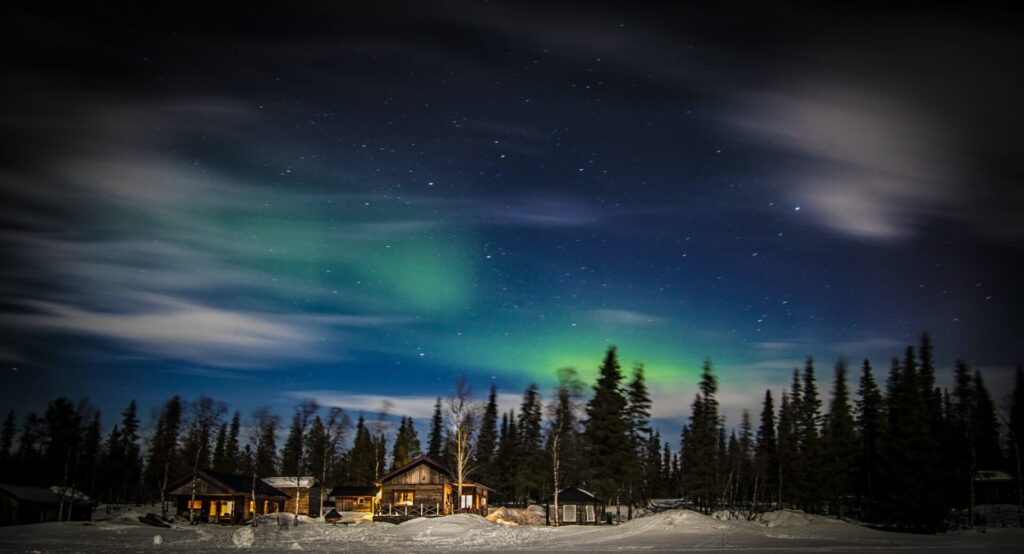
Narvik, Norway Interrail Itinerary tips
After Kiruna, we travel to Narvik, a city located on the coast of the Norwegian Sea and definitely worth including on your itinerary.
The journey to Narvik takes about 8 hours with the Arctic Circle Express Train, and it offers many breathtaking views of the surrounding landscape, with stops along the way at various points of interest – a trip you wouldn’t want to miss!
The trip from Kiruna to Narvik is only a small route part of the Arctic Circle Express, which is known as the longest nordic train journey and offers a unique and scenic round-trip route, with 13 stops in Sweden and Norway.
The city of Narvik is located in the region of Nordland and is surrounded by beautiful fjords, mountains, and forests. In addition to its natural beauty, Narvik is also known for its cultural attractions. The Narvik War Museum is a popular destination, with exhibits about the city’s history during World War II. The Narvik Church is another popular attraction, featuring beautiful architecture.
Next to the northern lights that can be seen in Narvik from late September to Early April, there is another natural phenomenon that occurs in the summer months in Narvik; The midnight sun. It’s the moment when the sun stays above the horizon for 24 hours a day and happens because Narvik is located north of the Arctic Circle. As a result, the sun never sets during the summer months (late May to late July). It’s a phenomenon that also takes place in both Kiruna as Rovaniemi.
Specific tips for your Narvik Interrail Itinerary:
- Narvik Adventures AS: This is a local adventure company that offers a variety of outdoor activities in Narvik (dog sledding, snowmobiling, and reindeer sledding) and offers super instagrammable luxury tents as accommodation.
- Ofoten Museum: a museum dedicated to the history and culture of the Ofoten region, where Narvik is located. It features exhibits on the local Sami people, the mining industry, and the region’s natural history.
- Silent Fjord Cruise: an electric cruise that sails to the historical site of Rombaksbotn, which lies at the bottom of the beautiful Rombaksfjord. They’ll stop at the wreck of Georg Theile, and here they’ll tell you about the strategic role the region played during World War II.
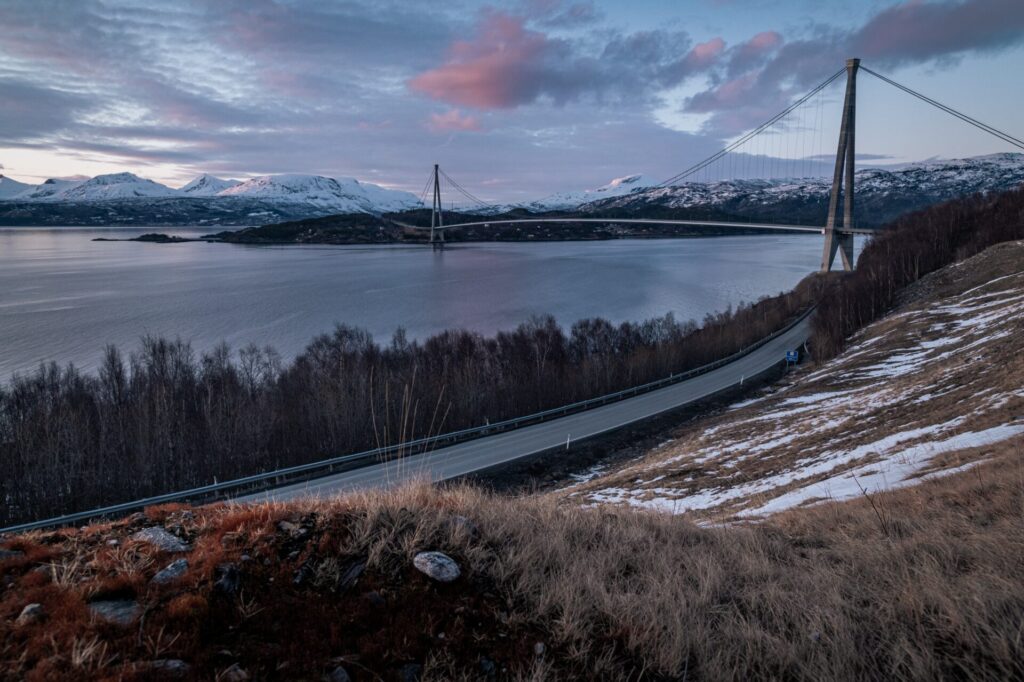
Bodo, Norway Interrail Itinerary tips
Only 180 kilometers (110 miles) from Narvik, you’ll find the city of Bodo. It’s the largest city in Nordland and is known for its beautiful landscape as it’s located on the coast of the Norwegian Sea and is surrounded by stunning fjords, mountains, and forests.
The Norwegian Sea plays a major role in the tourism industry of Bodo, as it is home to several popular attractions that are related to the sea, from guided boat tours to whale watching.
Another tourist attraction is the Bodo Lighthouse, which is located on the island of Gjerdinga just outside of Bodo. The lighthouse was built in 1838 and is now a popular tourist destination, offering panoramic views of the surrounding area.
The area in Bodo is world famous for Saltstraumen, a small strait located near the city that is known for having the strongest tidal current in the world. This strong tidal current creates a whirlpool called the Saltstraumen Maelstrom, which is a popular spot for boating and fishing.
Specific tips for your Bodo Interrail Itinerary:
- Bodo Cathedral: a historic cathedral built in the late 1800s and is known for its distinctive architecture and beautiful interior.
- Bodo Art Gallery: a contemporary art museum located in Bodo, featuring a wide range of exhibits, including paintings, sculptures, and installations by local and international artists.
- Norwegian Aviation Museum: a museum located in a former aircraft hangar dedicated to the history of aviation in Norway. It features many exhibits, including aircraft, engines, and other aviation-related artifacts.
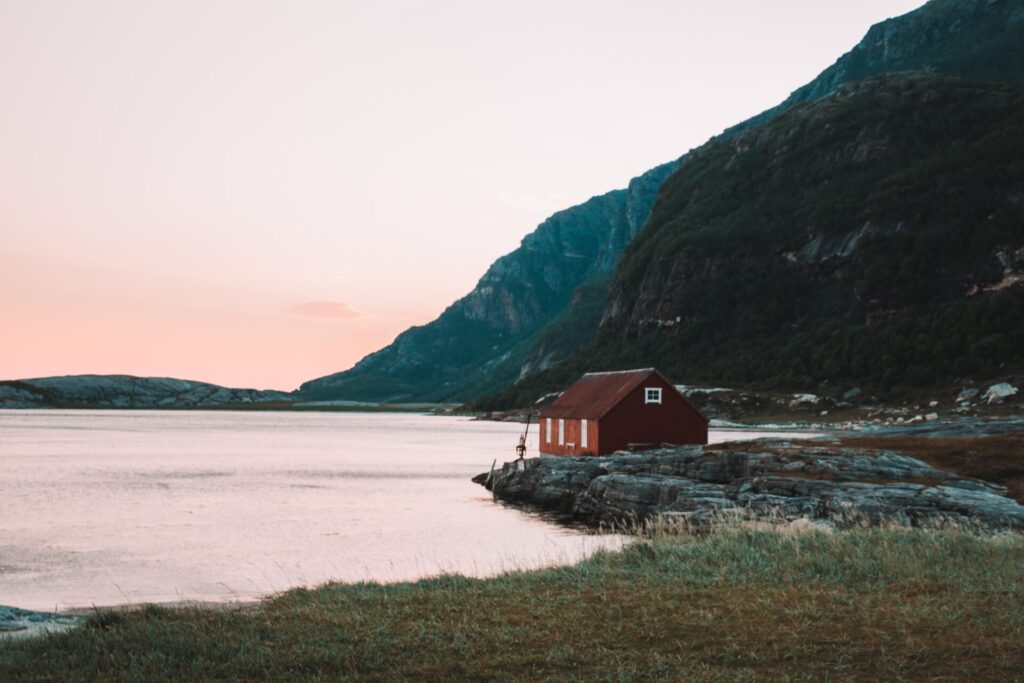
Trondheim, Norway Interrail Itinerary tips
From Bodo we descend to Trondheim, the third largest city in Norway and known for the city’s rich cultural history; Trondheim used to be the capital of Norway in the Middle Ages and is home to several historical landmarks, including the Nidaros Cathedral, which is the largest cathedral in Scandinavia and a popular tourist attraction. The city is also home to several museums, including the Archbishop’s Palace Museum, which is located in a beautiful 18th-century palace and features exhibits about the city’s history and culture.
In addition to its cultural attractions, Trondheim is also known for its stunning natural surroundings. The city is located on the Trondheim Fjord, which is a beautiful stretch of water that is popular for boating and hiking trails.
Specific tips for your Trondheim Interrail Itinerary:
- Scandic Bakklandet: a hotel located in the Bakklandet neighborhood, housed in a historic building, and is known for its charming atmosphere and views of the Nidelva River.
- Britannia Hotel: a historic hotel located in the center of Trondheim, built in the 1800s, and is known for its grand architecture and luxurious amenities.
- Kristiansten Fortress: a historic fortress located on a hill overlooking Trondheim. It was built in the 1700s to protect the city from attack, and it is now a popular tourist destination as the fortress offers panoramic views of Trondheim and the surrounding area.
- Skansen Fyr: a historic lighthouse located on the island of Munkholmen, built in the 1800s.
- Rockheim: a museum dedicated to the history of rock music in Norway, featuring exhibits on Norwegian rock bands and musicians, as well as music-related artifacts and memorabilia.
- Old Town Bridge: a historic bridge built in the 1800s.
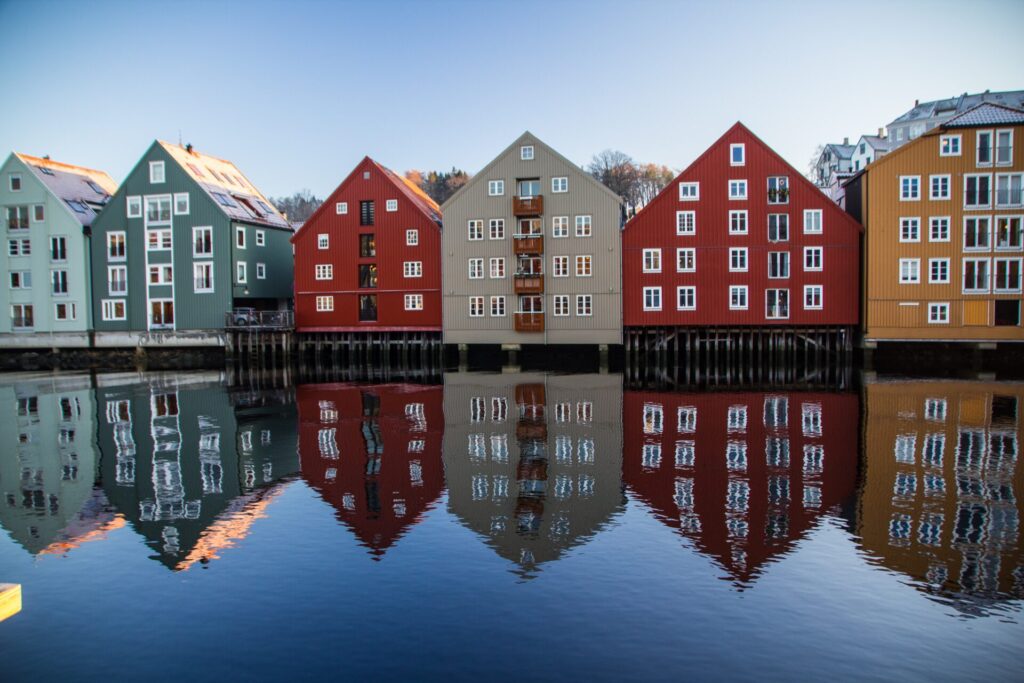
Bergen, Norway Interrail Itinerary tips
The train journey from Trondheim to Bergen takes about 7 hours and 30 minutes and passes through breathtaking views of the surrounding landscape, such as the Dovre Mountains, the Gudbrandsdalen Valley, and the Hardangerfjord, which is the second longest fjord in Norway.
The city of Bergen is located on the other side of the country, in the county of Hordaland. It is the second largest city in Norway and is a popular destination for outdoor activities such as hiking, fishing, and skiing, and the surrounding area is home to several beautiful hiking trails.
Bergen is also filled with historical landmarks including the Bergenhus Fortress and several museums, such as the Hanseatic Museum.
Specific tips for your Bergen Interrail Itinerary:
- Clarion Hotel Admiral: a luxury hotel housed in a historic building and is known for its stylish rooms and amenities.
- Opus 16: a modern concert hall that hosts various music and cultural events, including concerts, theater performances, and conferences.
- Fisketorget: a popular market is known for its fresh seafood, which is caught in the surrounding waters of the North Sea and the Atlantic Ocean.
- The Bryggen Wharf: a historic waterfront area home to a number of colorful wooden buildings that date back to the Middle Ages.
- The Fløibanen Funicular: a mountain railway that takes passengers up to the top of Mount Fløyen, which offers panoramic views of Bergen.
- Fantoft Stave Church: a historic wooden church built in the 1200s.
- Ulriken Cable Car: a cable car that takes passengers up to Mount Ulriken, the highest mountain in Bergen.
- Restaurant 1871: a fine dining restaurant known for its innovative cuisine and use of local ingredients.
- Fjellskaal Seafood Restaurant: a seafood restaurant.
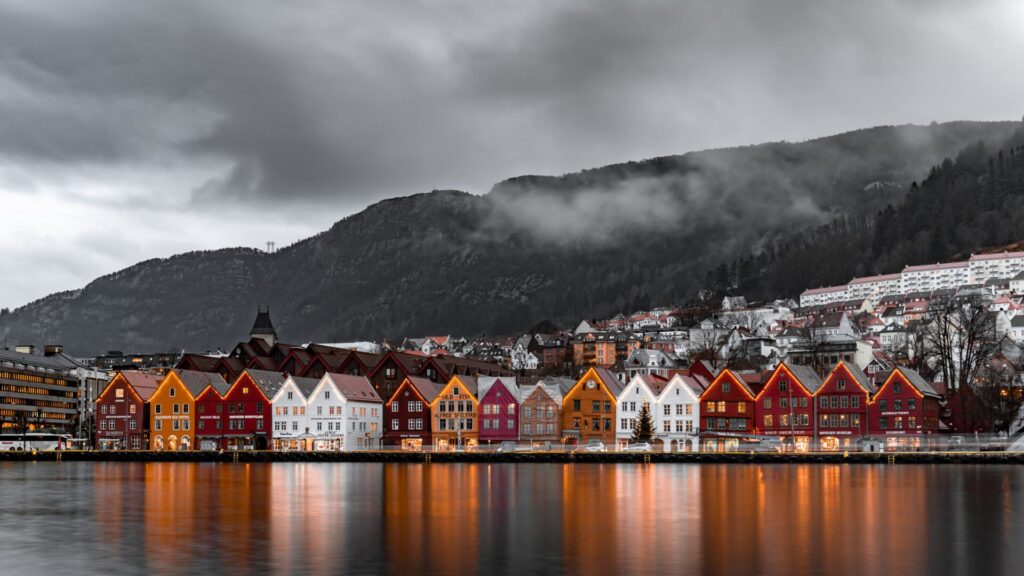
Stavanger, Norway Interrail Itinerary tips
The train ride from Bergen to Stavanger is a scenic journey through the beautiful landscapes of Norway. The train journey takes about 5 hours and 30 minutes and crosses over 280 kilometers.
Stavanger is a city located on the south coast of Norway, and it has a long and interesting history. The area has been inhabited since ancient times, and it was an important center of trade and industry in the Middle Ages.
In the 1100s, Stavanger became an important center for the production and export of iron, and it was also a major port for trade with other countries. In the 1800s, the city underwent a period of rapid industrialization, and it became a hub for the production of oil and gas. Today, Stavanger is known for its thriving oil and gas industry and houses the Norwegian Petroleum Museum.
Stavanger also has several historic landmarks and attractions that reflect its long and varied history. Some examples include the Stavanger Cathedral (built in the 1200s) and the old town of Gamle Stavanger (a well-preserved wooden house that dates back to the 1800s).
Specific tips for your Stavanger Interrail Itinerary:
- Cruise the Lysefjord: The Lysefjord is a beautiful fjord located near Stavanger, and it is known for its stunning scenery. Several companies offer boat tours of the fjord, including tours to Preikestolen, a popular hiking destination with panoramic views of the surrounding area.
- Swords in Rock Monument: a memorial that consists of three swords that are embedded in a rock and overlooks the city and the surrounding area.
- Hike to Kjeragbolten: a large boulder located on the mountain of Kjerag, near Stavanger.
- Flori 4444: a floral garden located with a wide range of plants and flowers.
- Thon Hotel Stavanger: a hotel known for its convenient location and comfortable amenities.
- RE-NAA restaurant: a fine dining restaurant known for its innovative cuisine and use of local ingredients.
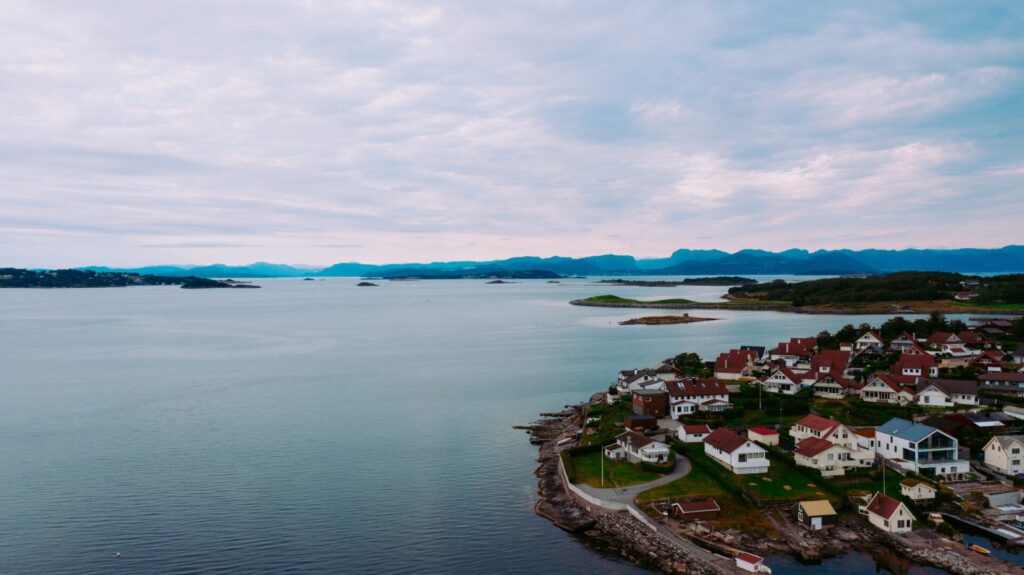
Oslo, Norway Interrail Itinerary tips
The train ride from Stavanger to Oslo is a 6 hours and 30 minutes journey through the beautiful landscapes of southern and eastern Norway, from the picturesque coastline of southern Norway to the rolling hills and forests of eastern Norway.
Oslo is the capital and largest city of Norway, and it has a long and rich history. The city was founded in the 1000s and was an important center of trade and industry in the Middle Ages. In the 1300s, Oslo became the capital of Norway, and it has remained the capital to this day.
Throughout its history, Oslo has undergone many changes and has been influenced by various cultures. In the 1800s, the city underwent a period of rapid industrialization, and it became a hub for producing iron and steel. Today, Oslo is known for its thriving economy, rich cultural heritage, and high quality of life.
Oslo is home to several historic landmarks and attractions that reflect its long and varied history. Some examples include the Oslo Cathedral, which was built in the 1100s, and the Akershus Castle, which was built in the 1200s.
The city is also home to several museums, including the Munch Museum, which is dedicated to the work of the famous Norwegian painter Edward Munch, and the Norwegian Folk Museum, which features exhibits about the history and culture of Norway.
We’ve written an entire guide about things to do in Oslo, but if you’re looking for specific tips for your Oslo Interrail Itinerary:
- Clarion Hotel the Hub: a modern hotel located in the center of Oslo. I
- Norda Restaurant: a fine dining restaurant known for its innovative cuisine and use of local ingredients.
- Oslo Opera House: a modern opera house located in the center of Oslo. It hosts a wide range of music and theater events and is known for its distinctive architecture.
- Akershus Fortress: a historic castle located in the center of Oslo, built in the 1200s.
- Nobel Peace Center: a museum dedicated to the Nobel Peace Prize and its recipients, and it features exhibits on the history of the prize and the work of its laureates.
- Vigeland Sculpture Park: a park located in Oslo that features a wide range of sculptures by the artist Gustav Vigeland. The park is known for its elaborate sculptures, depicting the human form in various poses and expressions.
- Viking Ship Museum: a museum located dedicated to the history of the Vikings. The museum features a collection of Viking ships and artifacts and offers a fascinating look at the culture and history of these ancient seafarers.
- Gol Stave Church: a historic wooden church located in Gol, about an hour’s drive from Oslo. It was built in the 1200s and is known for its beautiful architecture and intricate carvings.
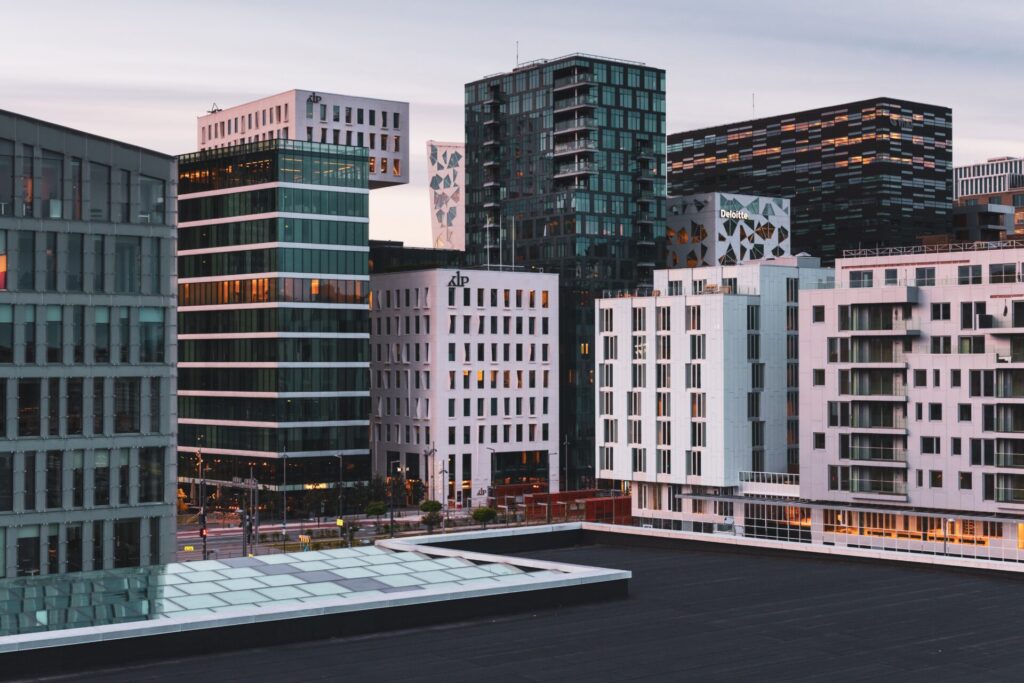
Copenhagen, Denmark Interrail Itinerary tips
A 7-hour train ride brings us from Oslo to Copenhagen, where our trip ends.
Copenhagen, the capital of Denmark, is a city that has a long and fascinating history of sustainability and environmentalism. From the 1970s onwards, the city has implemented a number of initiatives to reduce its carbon footprint and improve the quality of life for its residents. This is something tourists will quickly notice by Copenhagen’s extensive bike network, the number of modern buildings designed to minimalize environmental impact, and various sustainable-themed museums.
The city was founded in the 1100s and has played an essential role in Danish history ever since; In the Middle Ages, the city was an important center of trade and industry and home to a thriving merchant class. In the 1800s, the city underwent a period of rapid industrialization, and it became a hub for producing iron and steel.
Today, Copenhagen is home to several historic landmarks and attractions that reflect its long and varied history, such as the Copenhagen Cathedral, the Royal Palace, and the Tivoli Gardens amusement park. The city is also home to several museums and cultural centers that showcase its history and heritage, such as the National Museum of Denmark and the Danish Museum of Art & Design.
We already wrote an extensive itinerary for Copenhagen, but here are some specific tips:
- Superkilen Park: a public park located in the trendy Nørrebro neighborhood known for its colorful and eclectic design, which reflects the diverse cultures of the neighborhood.
- Kalvebod Fælled: a large open space located on the outskirts of Copenhagen, popular for picnics, sports, and nature walks, and it offers great views of the city.
- Copenhill: a waste-to-energy power plant that has been converted into a public park. It is located in the Amager neighborhood of Copenhagen and is known for its unique design and great city views.
- Nyhavn: a historic waterfront neighborhood known for its colorful houses and buzzin atmosphere.
- Marble Church: a historic church known for its impressive architecture and beautiful interior.
- Assistens Churchyard: a historic cemetery located in the Nørrebro neighborhood of Copenhagen, known as the final resting place of many notable Danish figures.
- Rosenborg Castle: a historic castle built in the 1600s and is now a museum that is open to the public.
- Christiansborg Palace: Christiansborg Palace is the seat of the Danish Parliament and the Prime Minister’s office.
- The Little Mermaid: a small but iconic statue located in the harbor of Copenhagen. It is based on a story by Hans Christian Andersen and is a popular tourist destination.
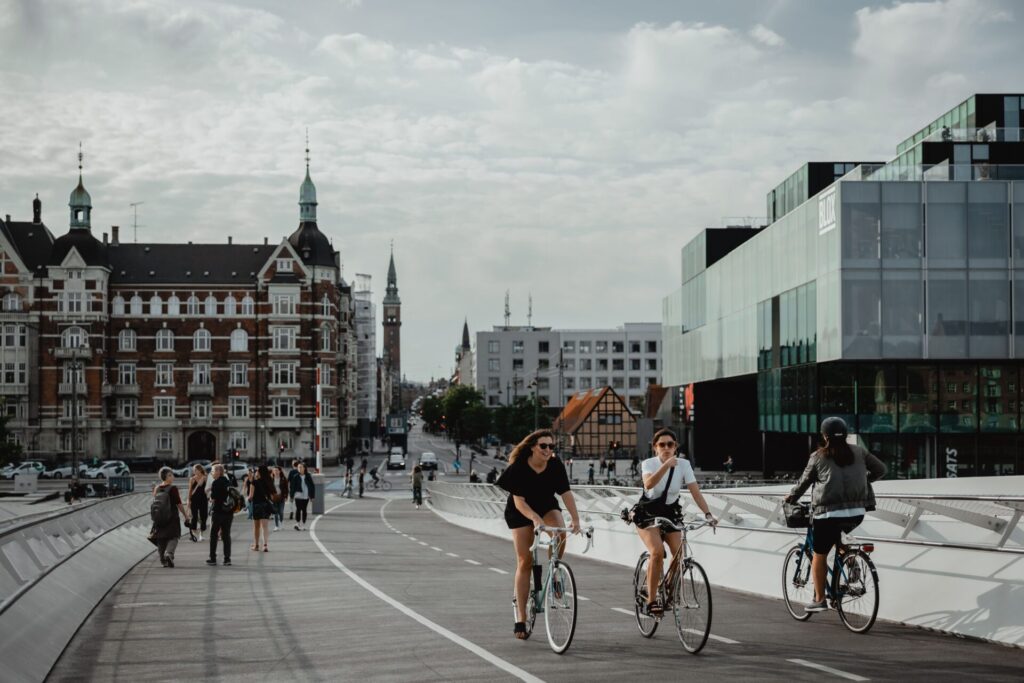
Save for later …





